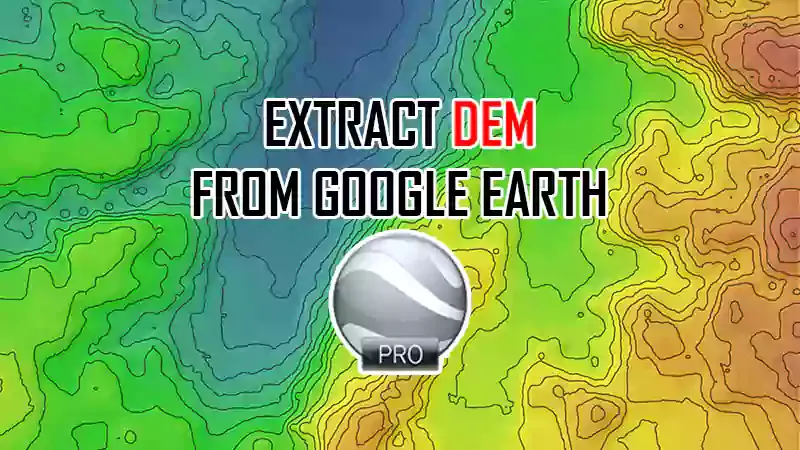%20from%20Google%20Earth.webp)
Extract digital elevation model (DEM) from Google Earth
A digital elevation model (DEM) is a representation of elevation data to represent terrain. A global DEM refers to a discrete global grid. Global Digital Elevation Models are available freely on the Web with spatial resolution 10 m, 12.5 m, 30 m and 90 m.
DEMs are commonly used in geographic information systems (GIS) to support a range of applications, such as land use planning, floodplain mapping, and natural resource management. They can also be used in engineering and scientific applications, such as hydrological modeling and analysis of geological structures. DEMs are typically stored as raster datasets, with each cell in the grid containing an elevation value. By analyzing the values in the grid, DEMs can provide insights into the topography and shape of a landscape, and support a range of spatial analyses and visualizations.
DEMs are usually stored as raster datasets, meaning that the surface is divided into a regular grid of square cells, and each cell is assigned an elevation value. The size of the cells (or the resolution of the raster) can vary depending on the source data and the intended use of the DEM. Higher resolution DEMs can provide more detailed information about the terrain, but may require more processing power and storage space.
DEMs can be used to create a variety of derived products, such as slope maps, aspect maps, and shaded relief maps. Slope maps show the steepness of the terrain at each location, while aspect maps show the direction of the slope (i.e., the compass direction that a hill or valley faces). Shaded relief maps use simulated lighting to create a 3D effect that highlights the topography of the terrain.
DEMs can be combined with other types of data to support a range of applications. For example, they can be combined with aerial imagery to create realistic 3D visualizations of landscapes, or with hydrological data to model the flow of water through a watershed.
DEMs can be used to calculate various terrain attributes, such as elevation profiles, contours, and drainage networks. These attributes can be used to support a variety of analyses, such as identifying areas at risk of flooding or landslides, or selecting suitable locations for infrastructure projects.
DEMs are commonly used in GIS software, such as ArcGIS and QGIS, but there are also many open-source tools available for working with DEMs, such as GRASS GIS and SAGA GIS.
How to extract digital elevation model from Google Earth
The following video shows how to How to extract digital elevation model (DEM) contour lines and Hillshade from Google Earth.
For extract digital elevation model (DEM) from Google Earth you need:
-> Google Earth + web site https://www.gpsvisualizer.com/elevation + ArcGIS
Google Earth > gpsvisualizer > ArcToolbox > Conversion Tools > From GPS > GPX to Features > Spatial Analyst Tools > Interpolation > IDW > Surface > Contour > HillShade…
Follow the video step by step for Extract digital elevation model (DEM) from Google Earth.
Overall, digital elevation models are a powerful tool for visualizing and analyzing terrain data, and they have many applications in fields such as geography, geology, environmental science, and civil engineering.